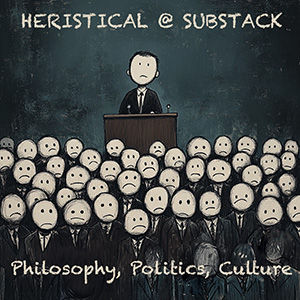
It’s hard to deny that the digital age, and especially the smartphone revolution, has changed the way we communicate. Written messages, once ponderously slow, now travel virtually instantaneously to even one’s most distant acquaintances. With text and email exchanges taking place at roughly the same speed as verbal ones, written communication has become much more casual. This is no surprise – after all, if you can correct a misinterpretation almost as soon as it happens, why spend hours, minutes, or even seconds agonizing over the clearest way of putting what you are trying to say? Just say something and see if it works.
The shift to online communication has also brought with it a variety of new tools: hashtags, hyperlinks, and a standardized range of emojis and emoticons, of both the ASCII variety (“;)” or “¯\_(ツ)_/¯”) and the newer, more stylized kind (“?” or “??”). Linguistic analysis suggests that the latter kind have more standardized meanings than an individualized smiley face once might have, and have also given rise to morphological effects like duplication (“??”).
It is far less clear, however, whether the shift to online communication has given rise to any fundamentally new forms of speech. Are there things we can do with our words – “speech acts,” in philosophical parlance – in the online world that we can’t do offline? We’re not certain whether the shift to online speech has given rise to any completely new types of speech acts, but we do want to draw attention to a type of speech act that has at least become much more pervasive because of online speech, especially on social media platforms. This is the speech act of amplification. Amplification has taken on a structural significance in online speech that is totally unprecedented in earlier, offline speech. Understanding the structure of online speech, therefore, requires understanding the nature of amplification.
Here’s one example of what we mean by amplification: Smith, who is rather shy, makes an excellent point in the course of a philosophy seminar. But they make the point too quietly for it to be heard by anyone but Jones, who is sitting right next to them. Taking care to make clear that they are merely repeating Smith’s idea, Jones restates what Smith said at a volume that others can hear. Commands and other exercises of authority can be amplified as well as suggestions and assertions. For example, suppose Diaz is trying to call a meeting to order, but cannot be heard over the boisterous conversation of the various participants. Martín intervenes by repeating Diaz’s calls to order, but at a much higher volume – effectively cutting through the cacophony.
It’s important not to conflate amplification with a nearby phenomenon which we might call “appropriation”: repeating a point that has been made by someone else, but which has been dismissed or ignored when coming from their mouth because they have either been interpreted uncharitably or presumed not to be credible (all too often because of their race, gender, ethnicity, non-conforming features, etc.). In cases of amplification, in contrast to cases of appropriation, the amplifier takes reasonable steps to see to it that the original speaker retains credit for their contribution to the conversation.
As the examples we just gave show, amplification is possible in ordinary face-to-face conversations. But it isn’t very common (it may be more common than we have made it out to be, depending on how we think about, for instance, quotation – but we will set that tricky issue to the side). Indeed, amplification in ordinary speech is uncommon enough that nothing like it is mentioned in any of the standard taxonomies of speech acts (such as those found in J.L. Austin’s seminal 1962 book, How to Do Things with Words, in John Searle’s 1969 book, Speech Acts, or Kent Bach and Robert Harnish’s 1979 book, Linguistic Communication and Speech Acts). In online speech though, amplification is an extremely important thing that we do with our words.
Consider “liking” on Facebook: in liking some content, one may well be expressing agreement or some other positive attitude towards it. But, inevitably, one is also interacting with Facebook’s ranking algorithm by means of this act. That algorithm tends to rank posts higher when they have received greater levels of engagement, in the form of likes, shares, or comments – particularly, shares by your “friends” and their “friends”. This means that, within the communicative system set up by Facebook, liking inevitably involves an element of amplification, even if it often involves more than that as well. Part of what it is to like a post is to make it more likely that your “friends” see the post, and for that post to become an acknowledged part of the conversation between you.
Retweeting is another type of online speech act that seems to be largely an amplificatory act. Whatever else one might manage to express via a retweet (approval, endorsement mockery, scorn, etc.), retweeting a tweet has the effect of ranking it higher both in general and, in particular, amongst one’s followers.
And because of how the retweet function and similar functions are designed, there isn’t much risk of people using them to appropriate rather than amplify. Unlike offline means of amplification, online amplification via retweeting on Twitter or sharing on Facebook is designed to automatically credit the content to its original creator, as a share or retweet preserves something like a copy of the original post along with its metadata.
At this point, you might have the following worry: given that, as best anyone can tell, ranking algorithms don’t just take account of likes and retweets, but also screen time engagement, don’t we risk having to say that merely watching a cute cat video, or watching it several times over, amounts to engaging in the speech act of amplification? Intuitively, that seems a strange thing to say; after all, we don’t typically think of reading or viewing or similar passive activities as speech acts, though undoubtedly these are acts which (often) involve language.
The reason why these passive consumption activities are not speech acts of amplification is that these activities do not have a characteristic aim of amplifying the content consumed. That’s not to say that no one could ever watch a video with the express aim of making it more visible to others. But this aim is not characteristic of the act of watching a video. And speech acts are at least partly defined by their characteristic aims: an assertion is an act whose characteristic aim is to inform someone, a command is an act whose characteristic aim is to direct someone’s actions, and so on. Again, that’s not to say that acts of these types always have these aims. Likewise, retweeting might not always be aimed at amplifying the original post. But amplification might well be the characteristic aim of retweeting and other forms of resharing.
Now let’s consider a different sort of worry. We’ve allowed that amplification is not usually all that people want to achieve with a like or retweet. So why count likes and retweets as amplificatory speech acts as opposed to just acknowledging that they have amplificatory side-effects? We can break this worry down into two parts. First, there is the question of whether liking or retweeting are speech acts at all. Second, there is the question of whether they are specifically amplificatory speech acts.
Starting with the first question, consider that liking and bare retweeting (that is, retweeting without any comment) might at first appear to be mere button pushing. After all, these acts typically amount to little more than pressing a small icon on one’s phone. So why think of these as speech acts, which one might reasonably expect to involve the production of language?
The way we see it is that different social media platforms have set up different structural contexts, different systems, within which speech can take place. Twitter limits the length of your posts, Instagram didn’t initially support hashtags, and so on. These contexts and systems build on those in which face-to-face conversation has always taken place, but they also add new means of interaction. One of the basic ways in which social media platforms allow their users to interact with others’ posts is via liking and retweeting or sharing. Importantly, these aren’t private ways of interacting with others’ posts. Rather, this behavior will, at the very least, be evident to one’s “friends” or “followers”. And it will be evident in terms of its effect on raw numbers to anyone on the platform. So liking and retweeting appear to be outward, other-directed ways of interacting with the speech of others.
Earlier we mentioned the characteristic aims of speech acts, and it’s worth asking what the characteristic aims of liking and retweeting are. In the case of liking something on Facebook or Twitter, it’s probably not amplification, but something more like serving to express a positive attitude (agreement, acceptance, amusement, etc.) towards the relevant content. But this is enough to make it a bona fide speech act, and amplification is a predictable, if often unintended, secondary effect of that act.
Bare retweeting, on the other hand, is a much better candidate for being a primarily amplificatory speech act. We have to be a little careful in how we make this suggestion, because ultimately we think that bare retweeting is too basic an act to have a characteristic aim. (We have written about this in a not-yet-published paper called “On Retweeting.”) Like uttering a sentence, retweeting a tweet can be used to do a wide range of things in different sorts of contexts, such as endorsing, condemning, mocking, informing, exhorting, and much more. To retweet is to make use of a bit of communicative structure that has many uses, in much the same way as to utter a declarative sentence of English is to make use of a bit of linguistic structure which can be used not only to assert things, but also to make requests, give commands, offer permission or advice, make pronouncements, and even ask questions.
That said, we are also inclined to think that a great many bare retweets are used to perform amplificatory speech acts. Consider the controversy over whether a retweet constitutes an endorsement: this is clearly a widespread view, as you can tell by the number of people who take the time to reject it in their Twitter bios. We think this view is wrong for a variety of reasons, one of which is that it simply fails to match up with the experience of bare retweeting. In our own experience at least, we often retweet and share items precisely because we find them of interest in one way or another and we simply wish to bring them to our friends’ and acquaintances’ attention. This sort of intention squares nicely with the view that these retweets are amplificatory speech acts. It would also go some way towards explaining why so many have been tempted to view retweeting as a form of endorsement: it is a natural enough assumption that the posts we hope to amplify are the very same ones that we endorse. But, in fact, we can aim to amplify posts which lack the right sort of content to endorse, as with questions or pictures, or which we have no interest in endorsing but merely find interesting, offensive, entertaining, and so on.
To summarize the argument so far: we began with the question of whether online speech environments have given rise to fundamentally new forms of speech, or speech acts. Rather than arguing directly for the “yes” answer, we instead chose to focus on a sort of speech act, amplification, which exists in offline conversations but is rare enough to have received virtually no attention in earlier philosophical investigations. Amplificatory speech, we then suggested, plays a prominent role in our contemporary online speech environments. This comes both in the form of direct amplificatory speech acts, such as a great deal of bare retweeting and sharing, and as at least a secondary effect of commented retweeting, commenting on a post, liking, and reacting.
In fact, we take the pervasiveness of amplification to be one of the most significant differences between online and offline speech: whereas offline, reacting to a given bit of speech might well serve to make that speech more prominent in the memory of those present, such reactions don’t directly increase the likelihood of others encountering the relevant bits of speech (except perhaps as a side-effect of mnemonic prominence). In online speech environments, the more that we interact with a given bit of speech, the more likely others are to come across it. So amplification has, effectively, gone from a vanishingly rare speech act and relatively weak secondary effect of other speech acts to a common type of speech act and a near universal, strong secondary effect.
What are the upshots of this shift? While we lack the space to delve too deeply into this question, we’ll mention one rather important upshot. The inevitability of amplification in the current structure of online speech makes it harder to determine the best response to problematic speech. As Robert Mark Simpson and Amia Srinivasan point out in their 2018 paper, “No Platforming,” it has probably always been too simplistic to think that the best way to confront problematic speech is with more speech, since this ignores the social significance of treating certain positions as positions to be taken seriously at all. But this approach becomes even more suspect in online speech environments. For unlike in a face-to-face conversation or even newspaper editorial, when one comments on or responds to a tweet or Facebook post, one also inevitably amplifies that original post, making it more likely that others will see it. This is an inevitable side-effect of the way that our social media ranking algorithms currently function. One question we ought to consider, then, is whether this is a desirable way for such algorithms to function. Another question is how we, as individuals, ought to respond to the recognition of this situation. We’re pessimistic about the prospects of offering a general theory of when and how individuals ought to respond to online hate speech and disinformation, for instance. But we can confidently say that when responding to such speech on- as opposed to off-line, there is another salient factor to consider: no matter how compelling your response might be, under present conditions, it will inevitably serve to amplify the very speech that you are responding to.
Eliot Michaelson, Jessica Pepp, and Rachel Sterken are currently collaborating on two related research projects, funded by the Norwegian Research Council and the Swedish Research council, focused on applying philosophy of language to, and drawing lessons for philosophy of language from, internet-based linguistic phenomena.
Eliot Michaelson is a senior lecturer in philosophy at King’s College London and honorary associate professor of linguistics at University College London. Jessica Pepp is a Burman Fellow and researcher in theoretical philosophy at Uppsala University (Sweden), researcher at the University of Oslo (Norway) and docent at the University of Turku (Finland). Rachel Sterken is associate professor of philosophy at the University of Hong Kong.

